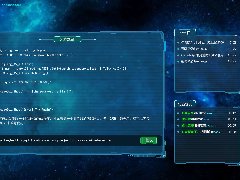Java说话中字符串类型和字节数组类型互相之间的转换时常发生,网上的阐发及代码也对照多,本文将阐发总结通例的byte[]和String间的转换以及十六进制String和byte[]间互相转换的道理及实现。
1. String转byte[]
首先我们来阐发一下通例的String转byte[]的要领,代码以下:
public static byte[] strToByteArray(String str) { if (str == null) { return null;
} byte[] byteArray = str.getBytes(); return byteArray;
}
很简单,即是挪用String类的getBytes()要领。看JDK源码可以发现该要领终极挪用了String类以下的要领。
/**
* JDK source code
*/public byte[] getBytes(Charset charset) {
String canonicalCharsetName = charset.name(); if (canonicalCharsetName.equals("UTF-8")) { return Charsets.toUtf8Bytes(value, offset, count);
} else if (canonicalCharsetName.equals("ISO-8859-1")) { return Charsets.toIsoLatin1Bytes(value, offset, count);
} else if (canonicalCharsetName.equals("US-ASCII")) { return Charsets.toAsciiBytes(value, offset, count);
} else if (canonicalCharsetName.equals("UTF-16BE")) { return Charsets.toBigEndianUtf16Bytes(value, offset, count);
} else {
CharBuffer chars = CharBuffer.wrap(this.value, this.offset, this.count);
ByteBuffer buffer = charset.encode(chars.asReadOnlyBuffer()); byte[] bytes = new byte[buffer.limit()];
buffer.get(bytes); return bytes;
}
}
上述代码其实即是凭据给定的编码方式举行编码。要是挪用的是不带参数的getBytes()要领,则应用默认的编码方式,以下代码所示:
/**
* JDK source code
*/private static Charset getDefaultCharset() {
String encoding = System.getProperty("file.encoding", "UTF-8"); try { return Charset.forName(encoding);
} catch (UnsupportedCharsetException e) { return Charset.forName("UTF-8");
}
}
关于默认的编码方式,Java API是这样说的:
The default charset is determined during virtual-machine startup and typically depends upon the locale and charset of the underlying operating system.
一样,由上述代码可以看出,默认编码方式是由System类的"file.encoding"属性决意的,经由测试,在简体中文Windows操纵体系下,默认编码方式为"GBK",在Android平台上,默认编码方式为"UTF-8"。
2. byte[]转String
接下来阐发一下通例的byte[]转为String的要领,代码以下:
public static String byteArrayToStr(byte[] byteArray) { if (byteArray == null) { return null;
}
String str = new String(byteArray); return str;
}
很简单,即是String的组织要领之一。那我们阐发Java中String的源码,可以看出全部以byte[]为参数的组织要领终极都挪用了以下代码所示的组织要领。必要留意的是Java中String类的数据是Unicode类型的,因此上述的getBytes()要领是把Unicode类型转化为指定编码方式的byte数组;而这里的Charset为读取该byte数组时所应用的编码方式。
/**
* JDK source code
*/public String(byte[] data, int offset, int byteCount, Charset charset) { if ((offset | byteCount) < 0 || byteCount > data.length - offset) {
throw failedBoundsCheck(data.length, offset, byteCount);
} // We inline UTF-8, ISO-8859-1, and US-ASCII decoders for speed and because
// 'count' and 'value' are final.
String canonicalCharsetName = charset.name(); if (canonicalCharsetName.equals("UTF-8")) { byte[] d = data; char[] v = new char[byteCount]; int idx = offset; int last = offset + byteCount; int s = 0;
outer: while (idx < last) { byte b0 = d[idx++]; if ((b0 & 0x80) == 0) { // 0xxxxxxx
// Range: U-00000000 - U-0000007F
int val = b0 & 0xff;
v[s++] = (char) val;
} else if (((b0 & 0xe0) == 0xc0) || ((b0 & 0xf0) == 0xe0) ||
((b0 & 0xf8) == 0xf0) || ((b0 & 0xfc) == 0xf8) || ((b0 & 0xfe)
== 0xfc)) { int utfCount = 1; if ((b0 & 0xf0) == 0xe0) utfCount = 2; else if ((b0 & 0xf8) == 0xf0) utfCount = 3; else if ((b0 & 0xfc) == 0xf8) utfCount = 4; else if ((b0 & 0xfe) == 0xfc) utfCount = 5; // 110xxxxx (10xxxxxx)+
// Range: U-00000080 - U-000007FF (count == 1)
// Range: U-00000800 - U-0000FFFF (count == 2)
// Range: U-00010000 - U-001FFFFF (count == 3)
// Range: U-00200000 - U-03FFFFFF (count == 4)
// Range: U-04000000 - U-7FFFFFFF (count == 5)
if (idx + utfCount > last) {
v[s++] = REPLACEMENT_CHAR; continue;
} // Extract usable bits from b0
int val = b0 & (0x1f >> (utfCount - 1)); for (int i = 0; i < utfCount; ++i) { byte b = d[idx++]; if ((b & 0xc0) != 0x80) {
v[s++] = REPLACEMENT_CHAR;
idx--; // Put the input char back
continue outer;
} // Push new bits in from the right side
val <<= 6;
val |= b & 0x3f;
} // Note: Java allows overlong char
// specifications To disallow, check that val
// is greater than or equal to the minimum
// value for each count:
//
// count min value
// ----- ----------
// 1 0x80
// 2 0x800
// 3 0x10000
// 4 0x200000
// 5 0x4000000
// Allow surrogate values (0xD800 - 0xDFFF) to
// be specified using 3-byte UTF values only
if ((utfCount != 2) && (val >= 0xD800) && (val <= 0xDFFF)) {
v[s++] = REPLACEMENT_CHAR; continue;
} // Reject chars greater than the Unicode maximum of U+10FFFF.
if (val > 0x10FFFF) {
v[s++] = REPLACEMENT_CHAR; continue;
} // Encode chars from U+10000 up as surrogate pairs
if (val < 0x10000) {
v[s++] = (char) val;
} else { int x = val & 0xffff; int u = (val >> 16) & 0x1f; int w = (u - 1) & 0xffff; int hi = 0xd800 | (w << 6) | (x >> 10); int lo = 0xdc00 | (x & 0x3ff);
v[s++] = (char) hi;
v[s++] = (char) lo;
}
} else { // Illegal values 0x8*, 0x9*, 0xa*, 0xb*, 0xfd-0xff
v[s++] = REPLACEMENT_CHAR;
}
} if (s == byteCount) { // We guessed right, so we can use our temporary array as-is.
this.offset = 0; this.value = v; this.count = s;
} else { // Our temporary array was too big, so reallocate and copy.
this.offset = 0; this.value = new char[s]; this.count = s;
System.arraycopy(v, 0, value, 0, s);
}
} else if (canonicalCharsetName.equals("ISO-8859-1")) { this.offset = 0; this.value = new char[byteCount]; this.count = byteCount;
Charsets.isoLatin1BytesToChars(data, offset, byteCount, value);
} else if (canonicalCharsetName.equals("US-ASCII")) { this.offset = 0; this.value = new char[byteCount]; this.count = byteCount;
Charsets.asciiBytesToChars(data, offset, byteCount, value);
} else {
CharBuffer cb = charset.decode(ByteBuffer.wrap(data, offset, byteCount)); this.offset = 0; this.count = cb.length(); if (count > 0) { // We could use cb.array() directly, but that would mean we'd have to trust
// the CharsetDecoder doesn't hang on to the CharBuffer and mutate it later,
// which would break String's i妹妹utability guarantee. It would also tend to
// mean that we'd be wasting memory because CharsetDecoder doesn't trim the
// array. So we copy.
this.value = new char[count];
System.arraycopy(cb.array(), 0, value, 0, count);
} else { this.value = EmptyArray.CHAR;
}
}
}
详细的转换历程较为复杂,其实即是将byte数组的一个或多个元素按指定的Charset类型读取并转换为char类型(char本身即因此Unicode编码方式存储的),由于String类的焦点是其里面保护的char数组。因此有乐趣的同窗可以研究下种种编码方式的编码准则,而后才能看懂详细的转换历程。
3. byte[]转十六进制String
所谓十六进制String,即是字符串里面的字符都是十六进制形式,由于一个byte是八位,可以用两个十六进制位来显露,因此,byte数组中的每个元素可以转换为两个十六进制形式的char,以是终极的HexString的长度是byte数组长度的两倍。闲话少说上代码:
public static String byteArrayToHexStr(byte[] byteArray) { if (byteArray == null){ return null;
} char[] hexArray = "0123456789ABCDEF".toCharArray(); char[] hexChars = new char[byteArray.length * 2]; for (int j = 0; j < byteArray.length; j++) { int v = byteArray[j] & 0xFF;
hexChars[j * 2] = hexArray[v >>> 4];
hexChars[j * 2 + 1] = hexArray[v & 0x0F];
} return new String(hexChars);
}
上述代码中,之以是要将byte数值和0xFF按位与,是由于我们为了利便背面的无象征移位操纵(无象征右移运算符>>>只对32位和64位的值故意义),要将byte数据转换为int类型,而要是干脆转换就会出现问题。由于java里面二进制因此补码形式存在的,要是干脆转换,位扩大会发生问题,如值为-1的byte存储的二进制形式为其补码11111111,而转换为int后为11111111111111111111111111111111,干脆应用该值后果就过失了。而0xFF默认是int类型,即0x000000FF,一个byte值跟0xFF相与会先将那个byte值转化成int类型运算,这样,相与的后果中高的24个比特就总会被清0,背面的运算才会正确。
4. 十六进制String转byte[]
没甚么好说的了,即是byte[]转十六进制String的逆历程,放代码:
public static byte[] hexStrToByteArray(String str)
{ if (str == null) { return null;
} if (str.length() == 0) { return new byte[0];
} byte[] byteArray = new byte[str.length() / 2]; for (int i = 0; i < byteArray.length; i++){
String subStr = str.substring(2 * i, 2 * i + 2);
byteArray[i] = ((byte)Integer.parseInt(subStr, 16));
} return byteArray;
}







